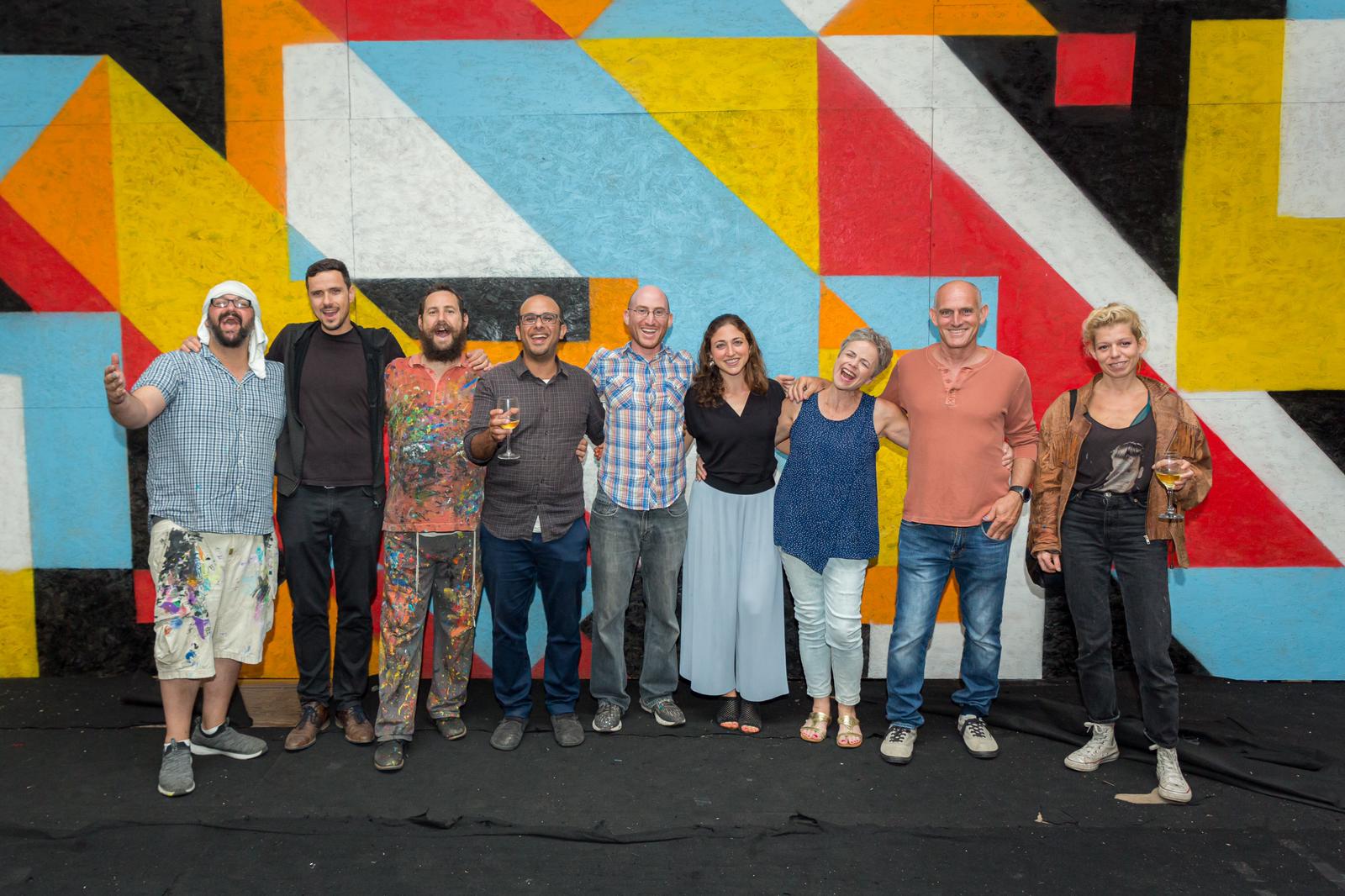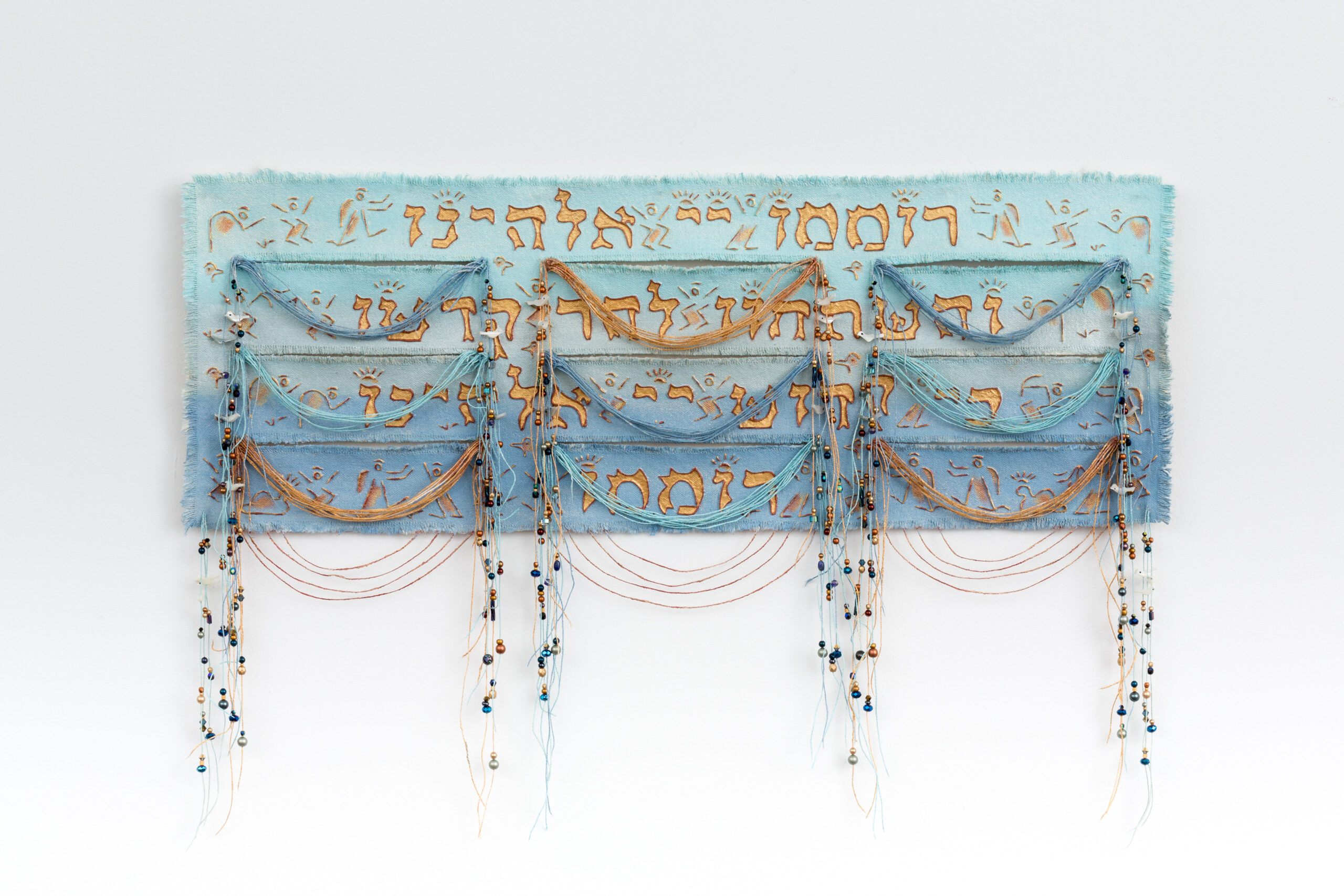THE AGJA INAUGURAL 2019 ARTIST GRANT AWARD RECIPIENTS
Working Artist $1,000 grant to Laurie Wohl
Educational $750 grant to Shoshannah Brombacher, Ph.D., Maggidah
Emerging Artist $500 grant to Hillel Smith
These artists exemplify the best of Contemporary Jewish Art and Object being created today and the AGJA is delighted to have been a part of their projects.
Thank you to Joel Silverstein, artist, curator, art critic, innovator, and Jewish arts educator for jurying our inaugural Guild grant submissions.
Hillel Smith
My practice includes creating large murals with Jewish themes, texts, and imagery. As part of the 2019 Jerusalem Biennale in October, I gathered together, for the first time, Jewish street artists from around the Diaspora and Israel who make street art with Jewish themes. These artists came from diverse backgrounds: Ashkenazi and Mizrachi, secular, religious, and in between. This array of perspectives exemplifies the richness of the Jewish world and was intended to create the stage for a broader conversation about Jewish art and identity. Over two and a half weeks, we painted 18 murals in three locations around Jerusalem. These photos show my mural on the concert stage at Jerusalem’s First Station (“Alef-Bet-Gimel”), my mural at The Artists’ Colony (“The First Day of Creation,” in a series of the seven days of creation painted there), and my contribution to a collaborative typographic mural at the Schechter Institute.
Shoshannah Brombacher
Shoshannah Brombacher PhD, New York Project: Avraham Abulafia’s Seven Paths of the Torah on Sicily in the Paintings of Shoshannah Brombacher. An artistic synchesis of a 13th century Kabbalistic text and its visual interpretation by a modern artist. New York 2019
In 2015, I came across The Seven Paths of the Torah of the Spanish/Sicilian kabbalist Avraham Abulafia (1240-1291) after reading Carmelo Zaffora’s inspiring novel about Abulafia’s life and travels. The theoretical, short treatise Sheva Netivot haTorah in archaic Hebrew describes seven different methods to interpret the Torah through the literal meaning of the text, combining texts, stories, midrashim, allegories, parables, deviant letters, Kabbalah, and prophecies. These seven methods (” Paths”) are universal and, mutatis mutandis, applicable to other subjects as well, like art. Since I had already visualized the equally theoretical Ethic of Spinoza, I decided to translate and transform Abulafia’s written text into painted images. In 2017, halfway through my project, I visited Sicily. From then on, I combined Abulafia’s medieval Paths with my own recent travel impressions. This resulted in seven large oil paintings (24 X 36 inches or bigger, one for each “Path”), and numerous smaller oil paintings, ink, pastel, and watercolor drawings. They are displayed and described in my book of 260 pages. It includes my annotated translation of Abulafia’s treatise into English, a biography, and an essay comparing art in different mediums, times, and settings, their interchangeability and presenting them indifferent mediums and/or languages and genres than their original, and the effect this has on different audiences. I explain my modus operandi creating the paintings and their subject matter. The latter relates to, but not always included in, Abulafia’s text. I use anachronisms and am influenced by my time and literature I read. I integrate my Chassidic painting style and my Sicily trip as an overriding arc to forge this unique, multidisciplinary project with historical, Jewish, and artistic significance. A twentieth century Dutch, Ashkenazy artist living in New York illustrates the writings of a thirteenth century, Sephardic, Sicilian kabbalist. What binds them is their strong Jewish background. His words become my colors; his ideas are expressed in my lines. The book contains illustrated poems and quotations in Hebrew, Italian, Dutch, German, and Latin with an English translation/ transcription. Numbered transparencies (see sample) refer to details in the paintings. This makes the book available to a wide audience, like those who are interested in Jewish art, (the history of Jewish) Sicily, Kabbalah, Judaism, Abulafia, and in my paintings in general.
I intend to create exhibits and give lectures about this book (due to the Coronavirus for now online) to promote greater interest in Jewish art and encourage viewers and listeners to delve into the writings and teachings of the great Medieval kabbalists so that they, too, can make their own personal connections. I am extremely grateful for the AGJA grant! It offers me possibilities for future exhibitions.
Laurie Wohl
I am an Unweaver and a storyteller. In my Unweavings fiber art pieces, I convey spiritual narratives through form, color, texture and calligraphy.
The words within each piece and the unwoven form suggesting these words evoke the power of various Biblical, spiritual and poetic texts. The unwoven spaces form symbolic shapes – wings, ladders, prayer shawls, veils, trees, falling waters, rivers, and the sacred architecture of windows, domes, and gates. The narrative is enhanced by my own distinctive iconography, indicating guardians, messengers, journeying and praying figures, processional figures and more.
By unweaving the fabric I “reveal” what is hidden within the material – liberating the threads to create shape, then “reweaving” through color, texture, and text. The narrative emerges from the juxtaposition of images within the surface, from the texts I choose, and from the combination of color, texture and pattern which convey a sense of time and place. My work alludes to the oldest traditions of narrative textiles, but in a completely contemporary idiom. And the pieces become carriers of my individual and our collective memories, through the spiritual narratives they transmit.
Music has been a central inspiration in my life and work – and nowhere more so than for The Shabbat Project. Over the years I have become increasingly affected by the words and music of the Kabbalat Shabbat service – the receiving, the welcoming of the Sabbath – a ritual composed by the 16th century mystics of Safed.
I have been particularly inspired by the beautiful Kabbalat Shabbat service welcoming the Sabbath at my own synagogue – Stephen Wise Free Synagogue (New York City) – led by Cantor Dan Singer.* The service consists of ancient prayers, psalms, niggunim and piyyutim.
The 12 pieces in The Shabbat Project interpret and embed the Shabbat prayers that have particular resonance for me through the music that carries them. The music calls forth the heart of the prayers – I unweave with my hands, feeling the sound and substance of these prayers. And by creating symbolic forms, incorporating Hebrew texts, and using my own narrative iconography in response to these prayers, I create a visual interpretation – a visual midrash.
A soundscape (on prepared iPods) is integral to and accompanies the project, so that the viewer can listen to melodies – both ancient and contemporary – that interpret these prayers.
Working in this way has opened up a path into thinking more closely about the relationship of text, sound, and visualization of prayer. How do we pray, what helps us to pray, what comes after prayer?
My hope for The Shabbat Project is that it will give the viewer a taste of the power of Kabbalat Shabbat, how music partners with, calls forth prayer, and how our understanding of prayer, and our “feel” for prayer, can be enhanced both by music and by visual interpretation.
*See Cantor Singer’s recently published “Tapestry of Prayer – A Jewish Songbook,” which is includes images from The Shabbat Project.






















